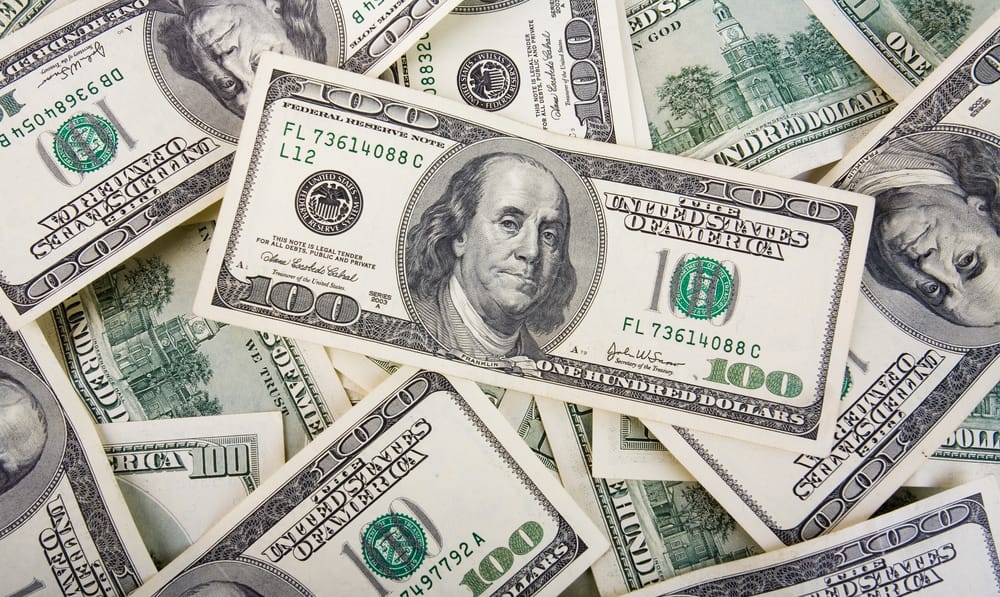The USD Is Weak, but Its Demise Is Being Greatly Exaggerated

Author: Michael Stern
Last Updated: 1 September 2020
During March, the value of the USD reached a three-and-a-half-year high against the world’s other most tradeable currencies. Traders flocked in droves to the safety of the dollar due to the devastating effects of the coronavirus pandemic. However, as a direct result of the slow response to the virus, the US’s economic recovery is being questioned by strategists. The greenback has also reacted to the rapidly surging deficit and the prospect of lower interest rates for a longer period.

Although the United States currency is taking a beating, the fear of it losing its place as the world’s reserve currency is something that is being greatly exaggerated.
The Dollar Is Set to Slide Further
The weakening United States dollar is set to slide further. However, according to analysts, the world’s reserve currency is unlikely to diminish in stature. The dollar benefited during the early days of the global pandemic as investors fled into safety. In March, the dollar reached a value not seen for over three years.
It is now late August, and as a result of the country’s inadequate response to the virus, strategists are beginning to doubt the forecasted recovery. Not only has the dollar reacted to the ever-increasing number of cases, but it is also responding to the surging deficit and the prospects of low interest rates.
Going into the last week of August, the dollar index fell to a 27-month low. The index stands at 92.477, a far cry from the March level of 102. Since March, the index has been swinging. Last week the index vacillated between 92 and 93 levels.
U.S. Economic Performance Is No Longer Guaranteed
When compared to Japan and the European Community, the dollar’s economic performance no longer seems guaranteed. Due to the nations weak response to COVID-19, a weaker dollar may be a fact for a few more years. The European Union has recently launched a 750 billion euro recovery fund. According to Patrick Schowitz, a J.P. Morgan asset manager, this alone gives investors increased confidence in the European currency as an alternative to the U.S. dollar.
Mr. Schowitz added, “The shrinking U.S. dollar interest rate makes the U.S. dollar less attractive, pushing investors to consider investing in alternative currencies.” The chances are slim that these factors will come to an early end. There is still room for the U.S. dollar to fall further.
BlackRock Investment Management is concerned that the dollar’s weakness will persist, at least in the near term. The factors that led to the dollar’s decline are expected to last for some time yet.
The Demise of the Dollar Is Greatly Exaggerated
Many analysts suggest that concerns over the dollar losing its status as the world’s reserve currency is grossly overblown. Senior Economist Jonas Goltermann of research firm Capital Economics says, “the dollar’s downfall is being greatly exaggerated.”
Mr. Goltermann said that the decline in the dollar index since March can be attributed to reasons other than the dollar’s reserve status. These factors include very low interest rates, and the steps being taken in Europe to stimulate the economy. This fact alone has prompted a shift from the dollar to the euro.
In the period June through August, the value of the U.S. dollar has lost about 6.6 percent against the euro.
There is no serious alternative to the United States dollar. The euro-zone and China are not only smaller than the U.S. their currencies have significant shortcomings. Due to fragile political underpinnings in the euro-zone and capital controls in China, neither are seen as serious competitors. Although the United States only accounts for about 12 percent of global trade, half of all global trade contracts are quoted in U.S. dollars.
BWCEvent aspires to share balanced and credible details on cryptocurrency, finance, trading, and stocks. Yet, we refrain from giving financial suggestions, urging users to engage in personal research and meticulous verification.


